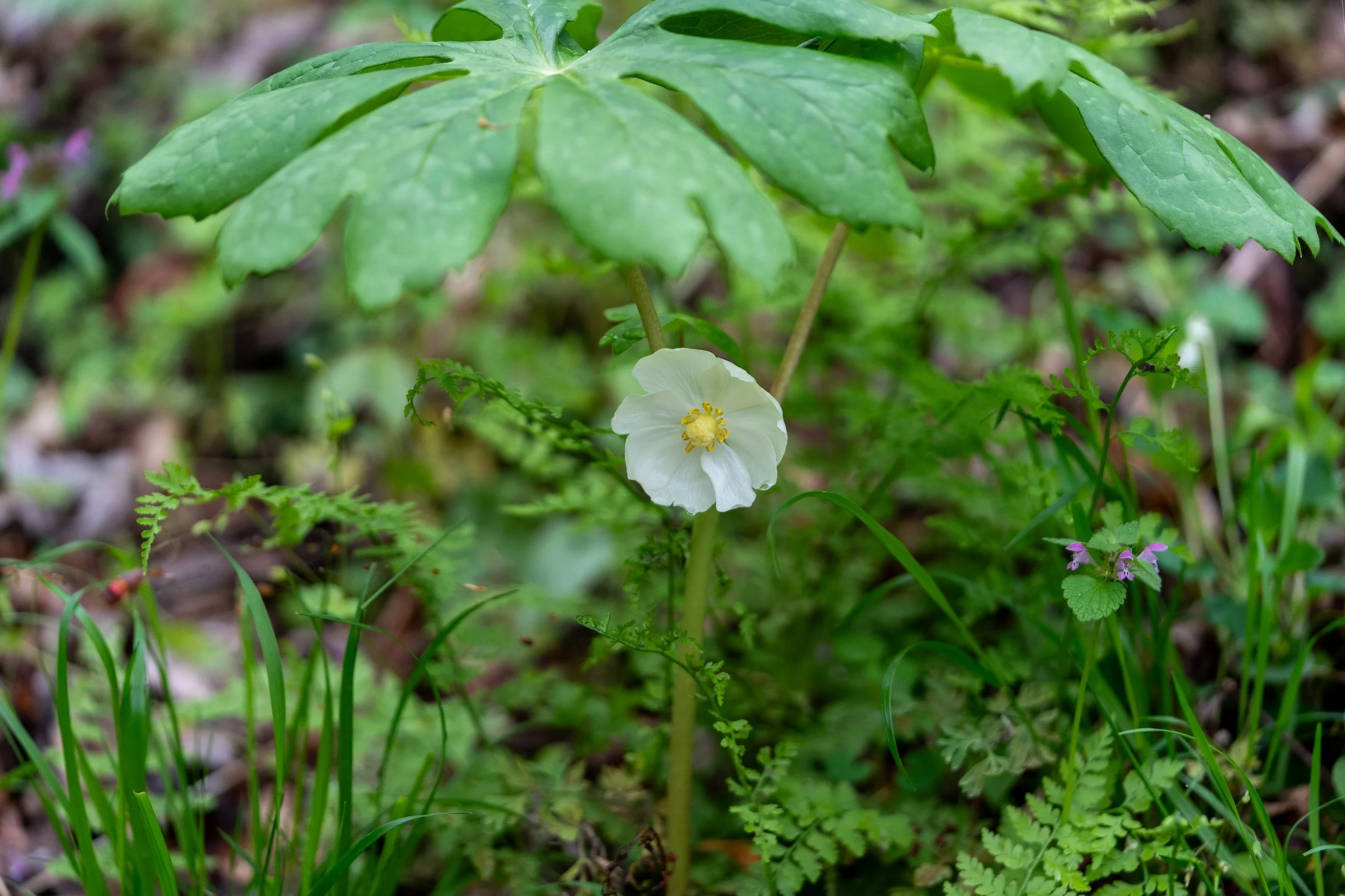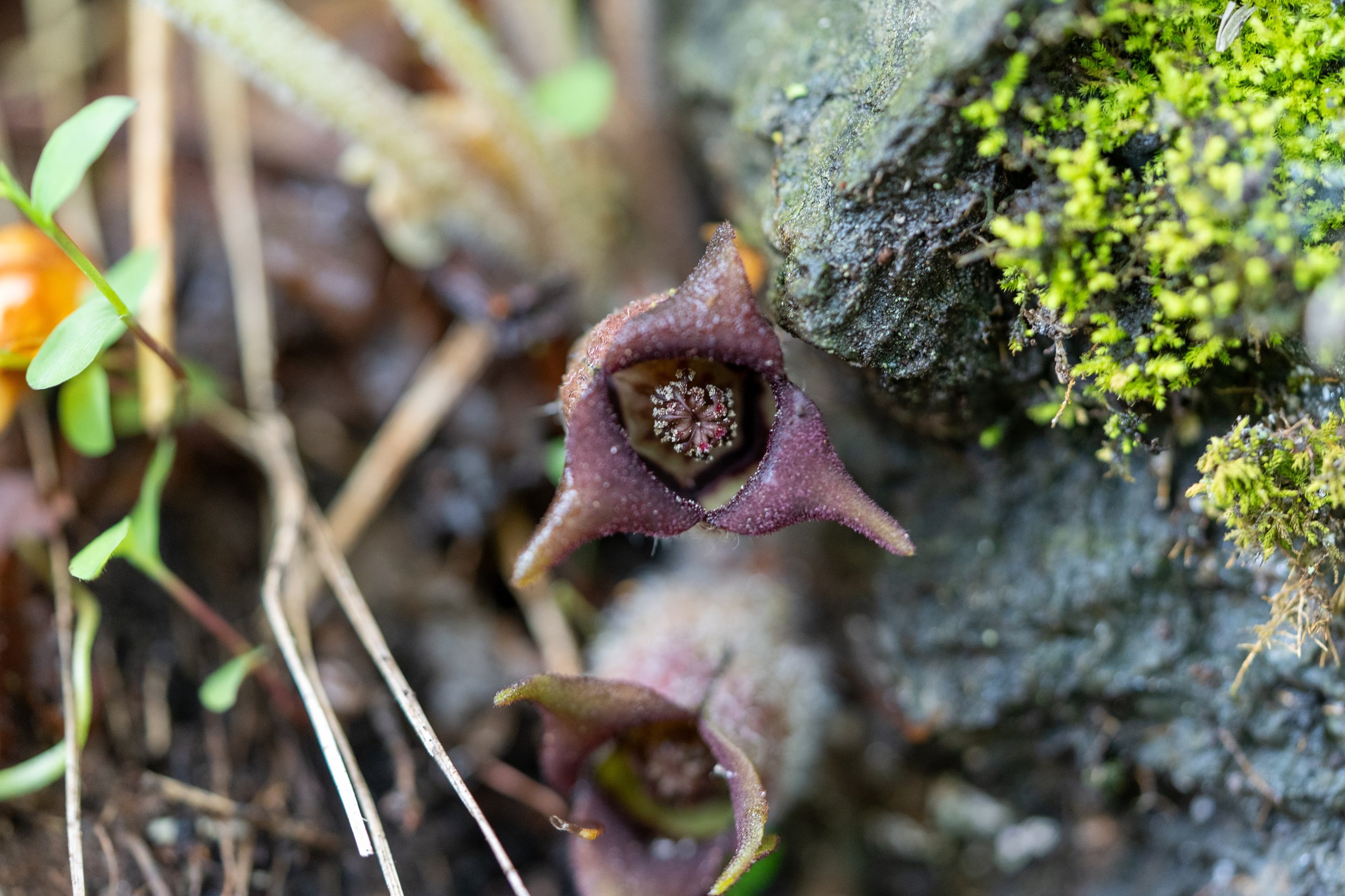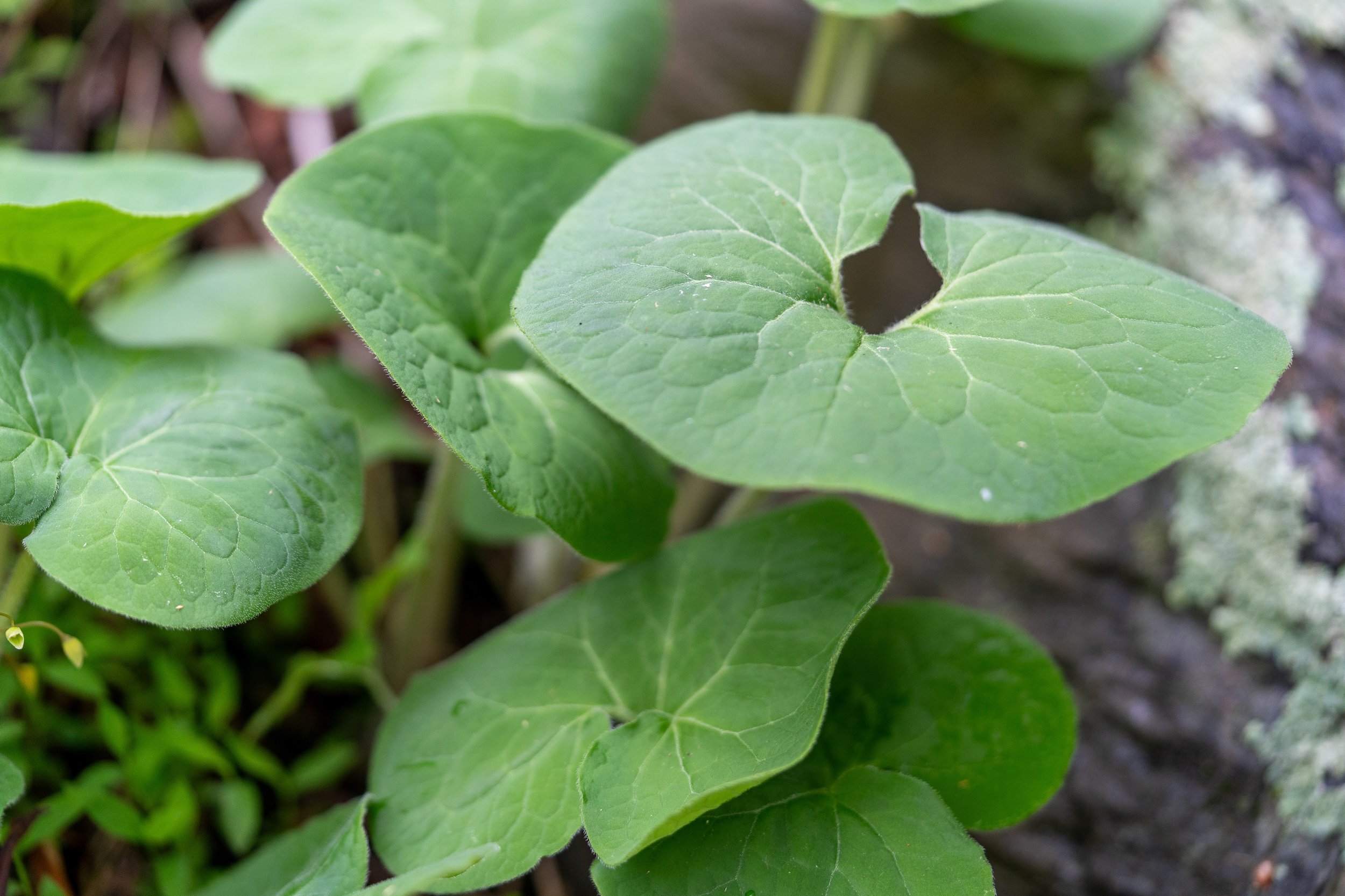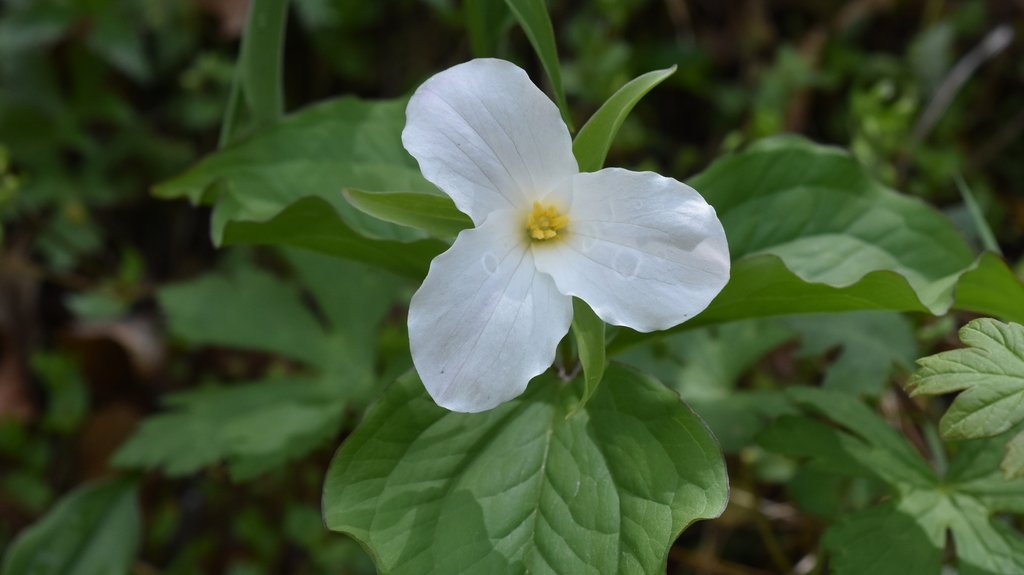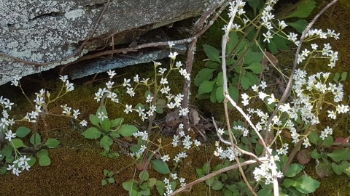If you didn’t get a chance to join us on our wildflower walk last Sunday, here’s your chance to live vicariously through pictures! After a bit of back and forth on the best location, we ended up just outside of Fries on the New River Trail. Led by Carol Broderson, our expert on wildflowers, and Amy Boucher, a member of the Friends of New River Trail, we learned some history about the area and then dove right in.
Group walking on the New River Trail, in an area with many invasive species.
Immediately after starting, Carol pointed out that the predominant species around us were non-natives or invasives that thrive in highly disturbed areas. If you’ve ever walked the Creeper trail in Abingdon, it would look very similar. We saw European honeysuckle, purple deadnettle, garlic mustard, bedstraw, and asiatic bittersweet (to name a few). The best way to manage these species? Stop them from establishing! Removing them is significantly more costly and time consuming than preventing them from showing up! Now that we’ve got that PSA out of the way, here’s what you came for…. the beautiful native wildflowers we did see!
Virginia Spring Beauty (Claytonia virginica): One of the earliest wildflowers.
With five white petals covered in delicate pink striping, Virginia spring beauties are very similar to their relative, the Carolina spring beauty (Claytonia caroliniana). Those pink stripes aren’t just pretty, though- they also reflect UV radiation and attract pollinators, like a runway to the stamens! Under the ground they have small, starchy corms, sometimes called fairy spuds, that can be cooked and eaten like potatoes! While we have plenty of Carolina spring beauties around BRDC, this was my first time seeing the Virginias. And I was struck by how tall they were! Another distinguishing feature was their longer, skinnier leaves. Once you’ve seen both in person, it’s much easier to distinguish them.
Mayapple (Podophyllum peltatum): The apples aren’t ready in May!
Another wildflower that’s hard to mistake for anything else, especially when it forms a large colony. First, one leaf will emerge. Just like a closed umbrella, until it POPS open! Some leaves will grow up to a foot in diameter, with deep lobes. Then some will grow a second leaf, giving them a Y-shaped stalk. Plants with two leaves are capable of developing a flower right where the two leaves meet. Large and white, with yellow stamens and pistils. Because of its placement, sometimes it can be difficult to see. Later in the season, go back and look for the tasty fruit (if the wildlife left you any)! But be careful- all parts of the mayapple are highly toxic except the ripened fruit!
Eastern Red Columbine ft. a caddisfly from the emergence happening on the New River.
Eastern Red Columbine (Aquilegia canadensis): The wildflower of birds.
The long spurs and red color of the columbine flower are perfect for one of its preferred pollinators- the ruby-throated hummingbird (Archilochus colubris). With a long, skinny beak, it has no trouble reaching distant nectaries! Lazy insects, when desperate, may take the easy way out and chew through the petals to reach nectar. This plant will easily hybridize with other non-native, ornamental plants of the same genus. Speaking of genus… its genus name, Aquilegia, comes from the Latin word for eagle- because its spurs look like talons!
Jack in the Pulpit (Arisaema triphyllum): A uniquely-shaped wildflower.
This flower can’t be mistaken for any other here in Virginia. A large green spathe with maroon striping hides a short spadix of flowers. The “Jack” inside the “pulpit”. Pollinated by flies, the best color to attract them is as close to rotting meat as you can get. Individuals can live for more than 25 years, and spread by seed and colonization from their underground corm. Wildlife are very fond of the bunch of tomato-like fruits that they bear in the fall.
Wild Ginger (Asarum canadense): The spicy wildflower.
Just like the ginger we use today, wild ginger root was once used by Indigenous Americans and settlers as a spice. Nowadays we know that it can contain poisonous compounds, so eat at your own risk! The easiest way to find this wildflower is to look for pairs of heart-shaped leaves. The wild ginger flower has evolved to attract flies emerging after winter. Rusty red and hanging low on the ground, flies think it’s a dead animal and walk right in. The mature seeds are coated in oil, as a tasty bribe for ants. Once underground, the ants get their snack and the seed starts to grow.
Wake Robin or Red Trillium (Trillium erectum): The wildflower that ISN’T Toadshade.
As we learned on our walk, the trilliums wake robin and toadshade (Trillium sessile) are often confused with each other. Understandable, as they both have a whorl of three leaves and maroon flowers. The biggest difference? Wake robins have a stalk between their flower and whorl of leaves, which often has the flower angled down towards the ground. For toadshade, the flower sits directly on top of the leaves and opens up to the sky.
If you couldn’t make it this year, hopefully you can join us next year!








